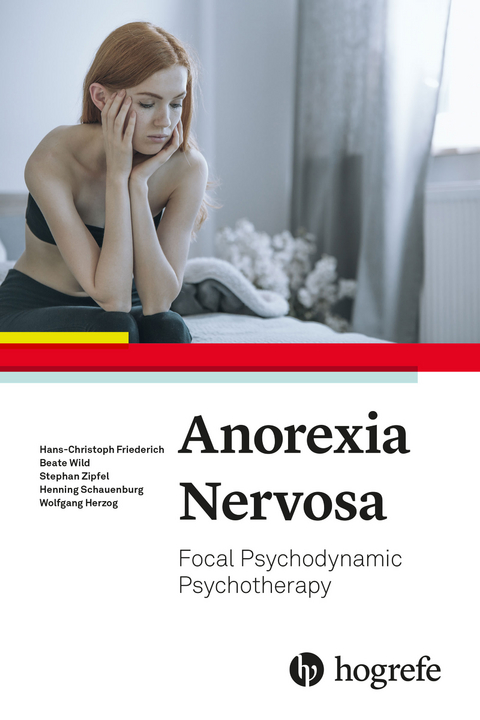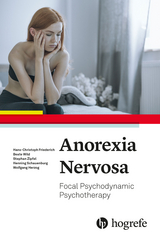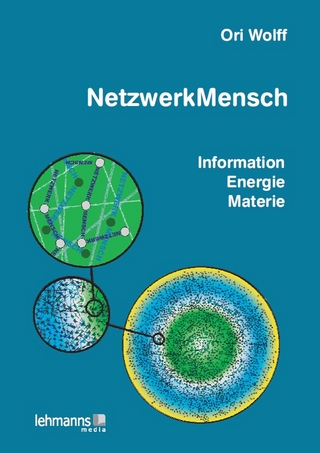Anorexia Nervosa
Hogrefe Publishing (Verlag)
978-0-88937-554-3 (ISBN)
This manual presents an evidence-based focal psychodynamic approach for the outpatient treatment of adults with anorexia nerrvosa, which has been shown to produce lasting changes for patients.
The reader first gains a thorough understanding of the general models and theories of anorexia nervosa. The book then describes in detail a three-phase treatment using focal psychodynamic psychotherapy. It provides extensive hands-on tips, including precise assessment of psychodynamic themes and structures using the Operationalized Psychodynamic Diagnosis, real-life case studies, and clinical pearls. Clinicians also learn how to identify and treat typical ego structural deficits in the areas of affect experience and differentiation, impulse control, self-worth regulation, and body perception. Two detailed case vignettes provide deepened insight into the therapeutic process. A final chapter explores the extensive empirical studies on which this manual is based, in particular the renowned multicenter ANTOP study. Printable tools in the appendices can be used in daily practice.
This book is of interest to clinical psychologists, psychotherapists, psychiatrists, counsellors, and students.
Hans-Christoph Friederich; PhD; Clinical Institute of Psychosomatic Medicine and Psychotherapy, University Hospital Dusseldorf, Dusseldorf, Germany. Beate Wild; PhD; General Internal and Psychosomatic Medicine, Heidelberg University Hospital, Heidelberg, Germany. Stephan Zipfel; PhD; Psychosomatic Medicine and Psychotherapy, University Hospital Tubingen, Tubingen, Germany. Henning Schauenburg; PhD; General Internal and Psychosomatic Medicine, Heidelberg University Hospital, Heidelberg, Germany. Wolfgang Herzog; PhD; General Internal and Psychosomatic Medicine, Heidelberg University Hospital, Heidelberg, Germany.
Preliminary:
1 Description of the Disorder
1.1 Description
1.2 Definition
1.3 Epidemiological and Sociodemographic Data
1.4 Predisposing Factors
1.5 Course and Prognosis
1.6 Differential Diagnoses
1.6.1 Psychological Differential Diagnoses
1.6.2 Medical Differential Diagnoses
1.7 Comorbidity
1.8 Diagnostic Instruments and Documentation
2 Theories and Models
2.1 Psychodynamic Understanding
2.1.1 The Intrapsychic Dynamic
2.1.2 The Interpersonal Dynamic
2.2 Concepts of the Cognitive Behavior Theory Model
2.3 Family Dynamic Aspects
2.4 Sociocultural Aspects
2.5 Biological Aspects
3 Diagnosis
3.1 Operationalized Psychodynamic Diagnosis
3.1.1 Axis I: Experience of Illness and Prerequisites for Treatment
3.1.2 Axis II: Interpersonal Relations
3.1.3 Axis III: Conflicts
3.1.4 Axis IV: Structure
3.2 Initial Interview and Deriving a Focus for Therapy
3.3 Operationalized Psychodynamic Diagnosis of Anorexia Nervosa
3.3.1 Relationship Patterns
3.3.2 Topics of Conflict
3.3.3 Structural Impairments
3.4 Therapeutic Handling of the Focus
4 Treatment
4.1 Treatment Setting
4.2 Therapeutic Framework
4.2.1 Managing Weight
4.3 General Principles of Therapy
4.3.1 Basic Characteristics of Psychodynamic Therapy
4.3.2 Handling of Transference and Countertransference Dynamics
4.3.3 Work on Body Image
4.3.4 Inclusion of the Family
4.4 Treatment Setup and the Initial Phase
4.4.1 Diagnosis, Therapeutic Alliance, and Deriving the Focus
4.4.2 Basic Therapeutic Stance
4.4.3 Working on the Therapeutic Alliance
4.4.4 Uncovering Proanorexic Beliefs
4.4.5 Focusing in on Self-Esteem Problems and Depressive Experiences
4.4.6 Amendments to the Initial Phase
4.5 Middle Phase (Working With the Focus)
4.5.1 Basic Therapeutic Stance
4.5.2 Focusing on Affective-Emotional Experiences
4.5.3 Additional Work on the Relationship Focus
4.5.4 Level of Structural Integration
4.6 Closure Phase
4.6.1 Basic Therapeutic Stance
4.6.2 Stabilizing New Skills
4.6.3 Applying New Skills in Day-to-Day Life
4.6.4 Anticipating Relapses
4.6.5 Persistence of Symptoms
4.6.6 Follow-Up Care
4.7 Procedural Challenges
4.7.1 Strong Ambivalence
4.7.2 Setting a Weight Goal (When Patients Are Unable to Formulate One)
4.7.3 When Patients Hold Onto Their Anorexic Behavior, Even When Negative Consequences Escalate
4.7.4 Weight Loss in Therapy, Particularly in Regard to Weight Manipulation
4.7.5 Newly Emerging Bulimic Behavior
4.7.6 Self-Injuring Behavior
4.7.7 Medical Complications, Such as Dehydration
4.7.8 Meddling by Others - For Example, Family
4.7.9 Handling the Indication for Inpatient Admission
4.7.10 Excessive Endurance Sports
4.8 Adjuvant Therapies
4.8.1 Adjuvant Therapy With Psychopharmacology
4.8.2 Adjuvant Intake of High-Calorie Dietary Supplements
5 Case Examples
6 Efficacy
6.1 Research Background
6.2 The ANTOP Study
6.2.1 Design and Participants
6.2.2 Weight Gain and Recovery
6.2.3 Predictors of Outcome
6.2.4 Therapeutic Process and Outcome
6.2.5 Cost-of-Illness and Cost-Effectiveness Analyses
6.2.6 Summary
Appendix: Tools and Resources
Nutrition Guidelines for Patients With Anorexia Nervosa
Weight Curve
| Erscheinungsdatum | 18.12.2018 |
|---|---|
| Verlagsort | Toronto |
| Sprache | englisch |
| Maße | 152 x 228 mm |
| Themenwelt | Geisteswissenschaften ► Psychologie ► Klinische Psychologie |
| Medizin / Pharmazie ► Medizinische Fachgebiete ► Psychosomatik | |
| Medizin / Pharmazie ► Medizinische Fachgebiete ► Psychiatrie / Psychotherapie | |
| Schlagworte | Anorexia nervosa • DSM-5 • Eating Disorders |
| ISBN-10 | 0-88937-554-2 / 0889375542 |
| ISBN-13 | 978-0-88937-554-3 / 9780889375543 |
| Zustand | Neuware |
| Informationen gemäß Produktsicherheitsverordnung (GPSR) | |
| Haben Sie eine Frage zum Produkt? |
aus dem Bereich




